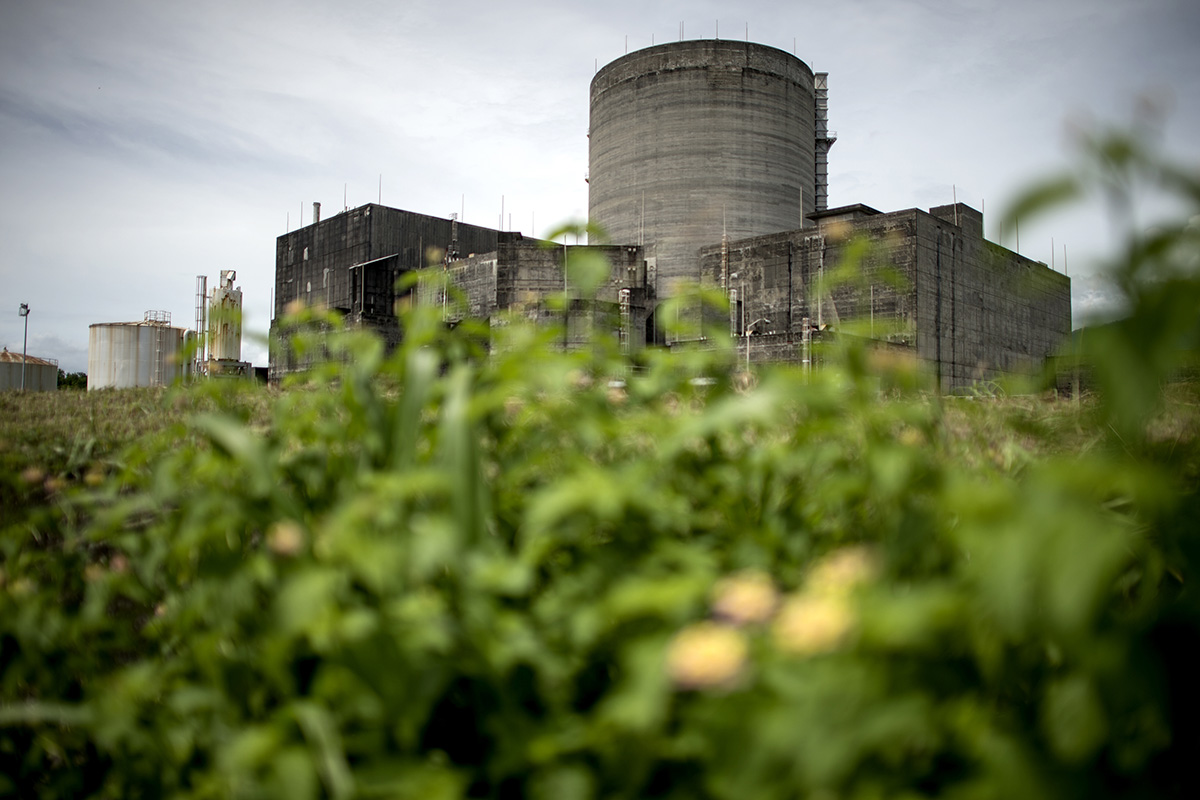Situated strategically in the heart of Asia, the Southeast Asia region boasts an abundant and diversified supply of fossil fuels and renewable energy. In any country, having the ability to provide affordable, reliable and sustainable energy is crucial in improving living standards and unlocking the economic potential of any nation.
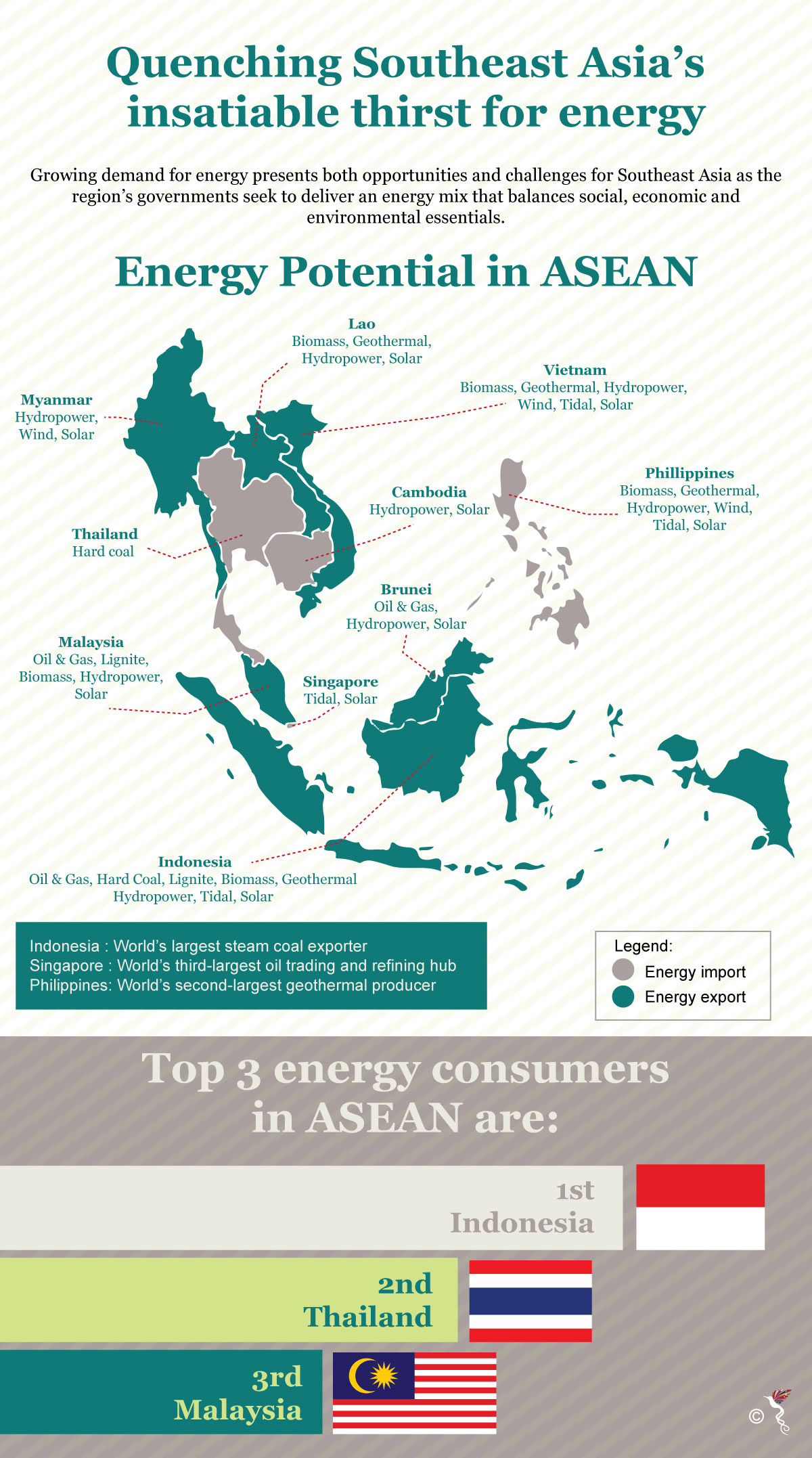
Energy potential of ASEAN.
Over the past 25 years, according to the IEA (International Energy Agency), energy demand in Southeast Asia has increased by over 150 percent. The IEA also forecasted that the growth for energy demand in the Southeast Asia region will increase another 80 percent from the current consumption, or reach 1,070 Mtoe (million tonnes of oil) by 2040 while electricity generation for the same time period is expected to reach 1,104 TWh (terawatt hours). As the region’s economic development and demographic growth continues to boom, Southeast Asia will have a larger appetite for energy. Huge demands for energy presents both challenges and opportunities for Southeast Asia as the region’s governments seek to deliver an energy mix that balances social, economic and environmental essentials. Nevertheless, addressing the growing demand for energy has been a continuous challenge for ASEAN (Association of Southeast Asian Nations) and its member states.
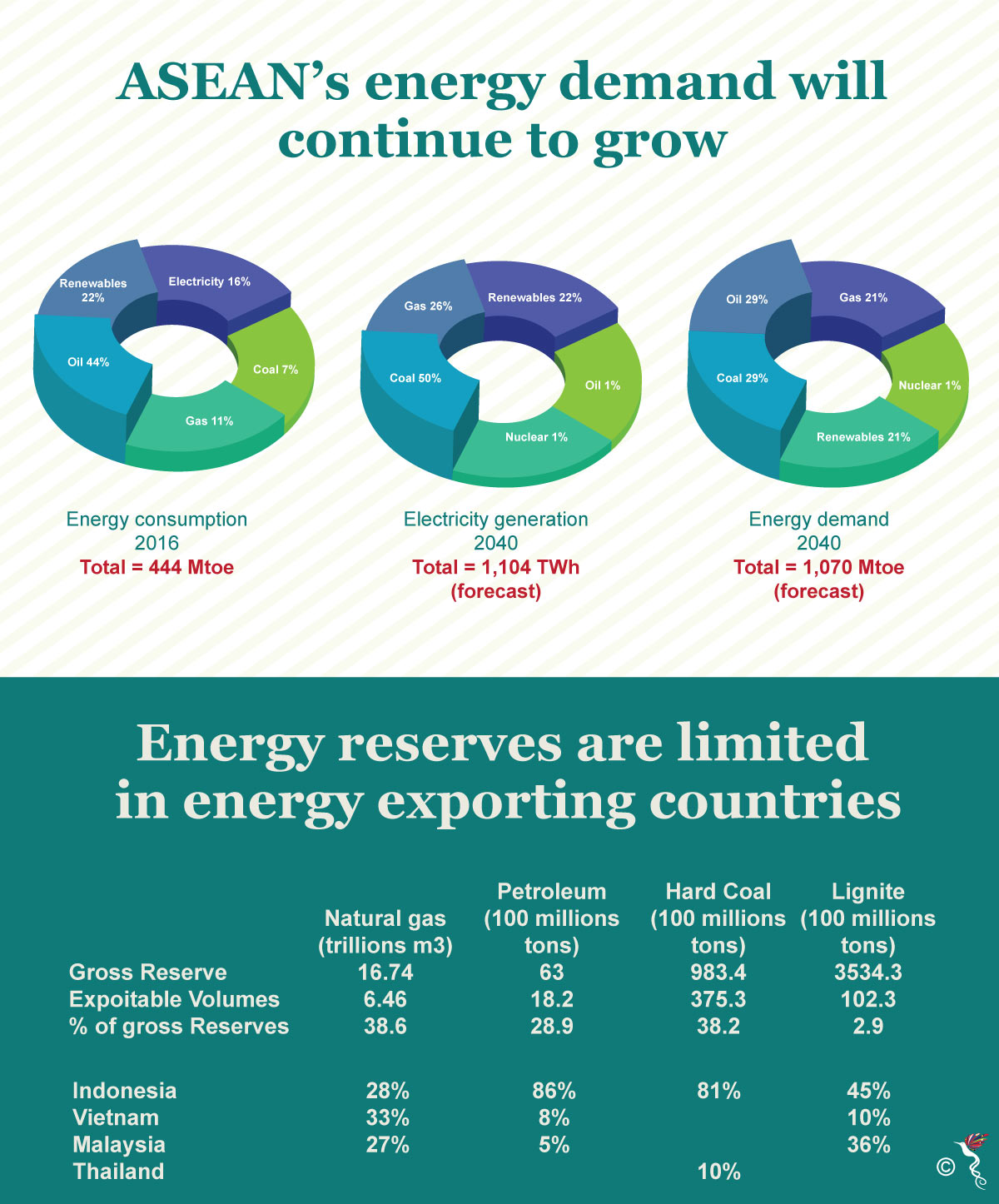
Energy demand and reserves* in ASEAN.
When contacted by The ASEAN Post, Frost and Sullivan's Principal Consultant (Energy and Environment) Suchitra Sriram said “energy consumption in Southeast Asia has accelerated over the years and the growth momentum is expected to continue due to strong economic growth in developing countries, rising urbanisation, continued reliance on fossil fuels for transportation, industry and power generation sectors, and increasing ability of consumers to spend on energy-consuming electrical and electronic devices, amongst others.”
While the ASEAN region is rich in natural resources, a significant disparity exists among the 10 nations in terms of resource endowment and development conditions. Countries like Thailand, the Philippines, Singapore and Vietnam are generally projected to be energy deficient while Lao, Malaysia and Indonesia are able to produce surplus energy. However, the IEA also forecasts that all ASEAN countries will be energy deficient by 2035 – except for Brunei.
Countries that rely on imported fuels are more prone to the effects of global price hikes and experience supply shortages quicker than other countries within the region. While countries that export energy act as a primary source for energy to their neighbouring countries, they will be unable to cater to domestic needs in the long run as they will end up exhausting their high-quality energy in the exporting processes. This will then lead the country into experiencing energy shortages to meet demands domestically.
At this moment, about twenty percent of the total ASEAN population (or 120 million people) still live without electricity while 45 percent of them rely heavily on solid fuels such as fuelwood and charcoal for cooking. However, as the region continues to experience rapid urbanisation and non-traditional appliances are introduced to people living in the rural areas, the access to modern energy sources like electricity will improve as well.
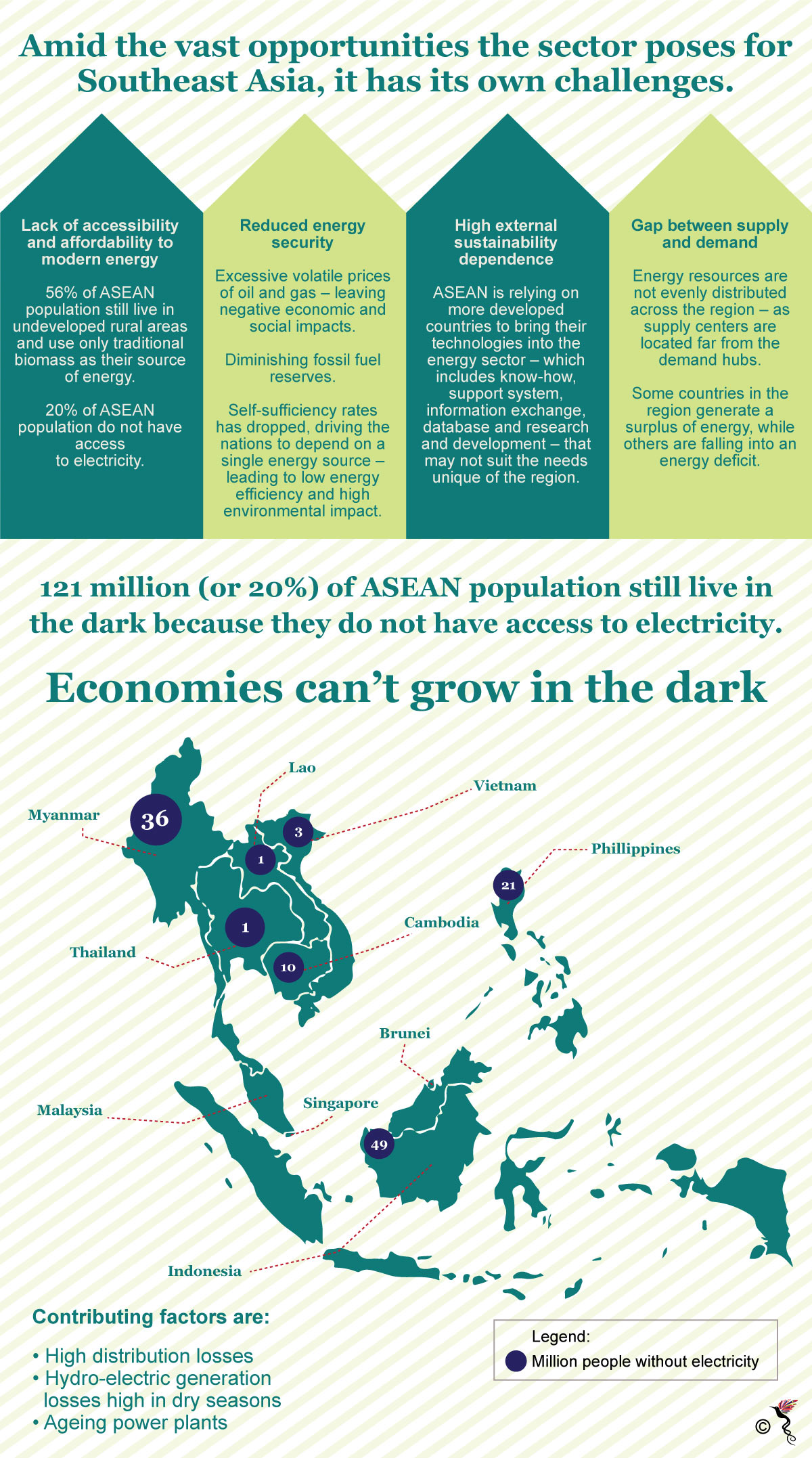
Challenges of ASEAN's energy.
At the same time, Southeast Asian nations should focus on energy security and energy efficiency issues in order for ASEAN to achieve a sustainable economic growth, market integration and mitigate the adverse impacts of climate change as a unified body. The need and development for renewable energy sources is equally important in the context of diminishing fossil fuel reserves and environmental harm.
“As much as the demand for primary energy in Southeast Asia is projected to increase rapidly, several countries in the region have initiated measures to improve energy efficiency through supportive policy mechanisms and financial incentives. This includes adoption of building energy codes, energy efficient public lighting systems, fuel efficiency standards for various types of passenger vehicles,” Suchitra explained.
In view of increasing demand for energy, the regional body has stepped up its efforts in the field of policy development and harmonisation to foster stronger regional cooperation and economic integration among the 10 member states in ASEAN through the APAEC (ASEAN Plan of Action for Energy Cooperation) 2016-2025. This regional initiative will help to realise the vision towards achieving energy security while promoting energy efficiency and the sharing of energy resources.
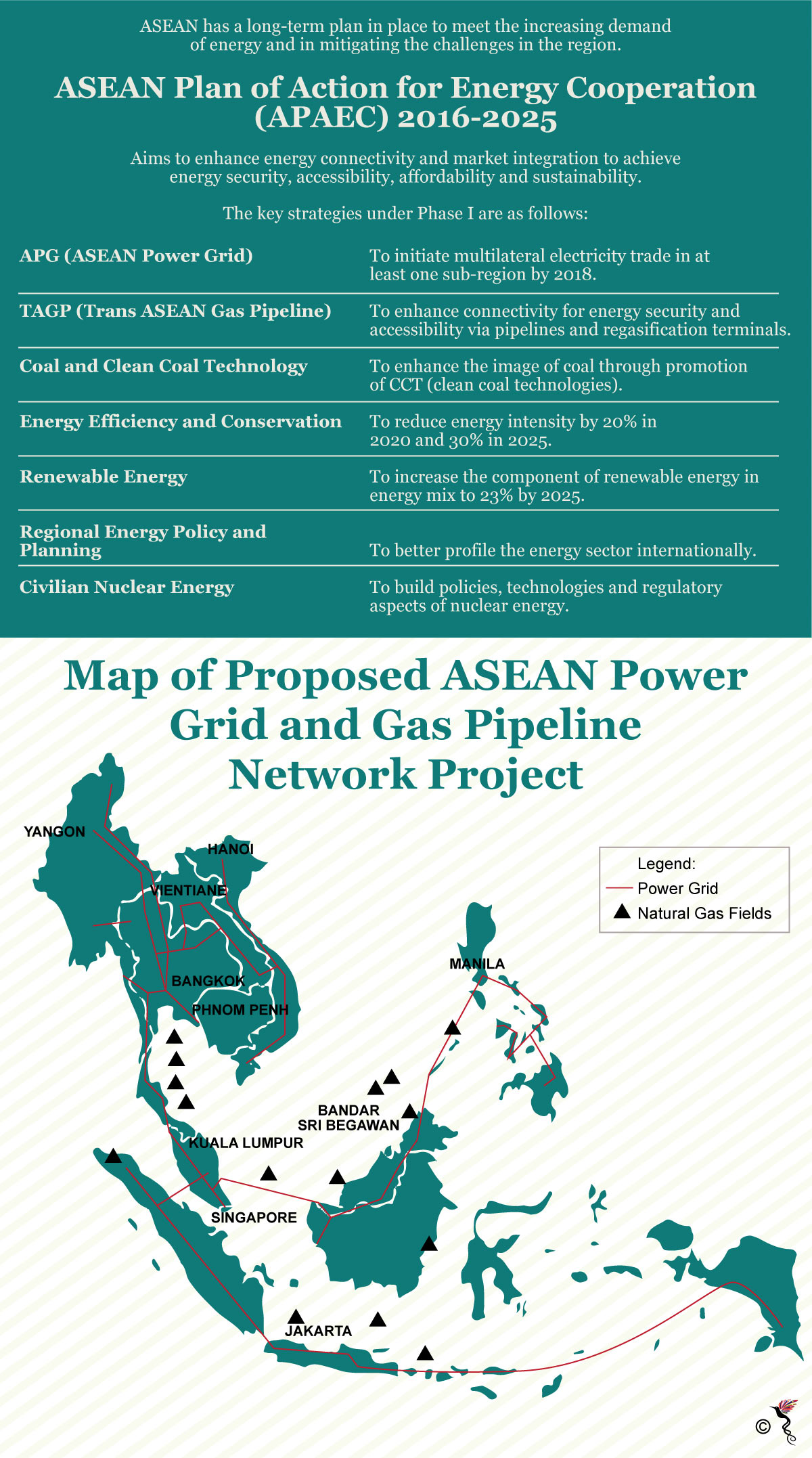
The ASEAN Plan of Action for Energy Cooperation (APAEC).
Extended over a period of 10 years, the APAEC will be implemented in two phases. "Phase I" will run from 2016 to 2020 which will focus on the short to medium-term strategies. A midterm review of Phase I will be conducted in 2018, in order to guide ASEAN in charting the roadmap for "Phase II", which will cover 2021 to 2025.
*Research indicates a gap in the data obtained from the ASEAN Cooperation Report on gross reserves and exploitable volumes for energy distribution for selected countries. The data for these countries remain unverifiable at this stage.
